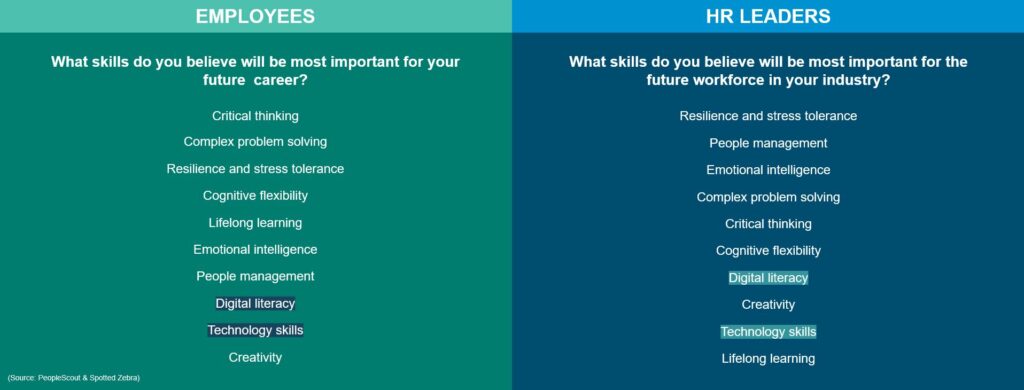Amidst the most turbulent labour market in recent memory, talent acquisition leaders and procurement professionals alike are turning to partners for creative, agile and adaptable solutions for their current and future talent challenges. Because recruiting touches the whole organisation, stakeholders across the business will have opinions on the benefits and drawbacks of recruitment process outsourcing (RPO) as well as unique ideas about the best approach. The process to secure buy-in and budget doesn’t have to be difficult. By having a few conversations with the right people in your organisation and gathering some information around current recruitment processes and costs, you can present a solid business case for RPO to your leadership team and create a path forward to an effective and resilient talent acquisition program.
In this article, we’ll arm you with the information you need to speak to different stakeholders, calculate costs and present your business case for RPO. Plus, we’ve included a free template to help you get started.
What is RPO?
First things first—what is recruitment process outsourcing? Recruitment process outsourcing, abbreviated as RPO, is a type of business process outsourcing in which an employer transfers some or all portions of the recruitment process to an external service provider. These facets may include job postings, sourcing, screening, assessments, offer management, background verifications, some onboarding elements and more.
RPO can support hiring for high volume or niche professional roles and often involves technology and talent advisory consulting—including employer branding. An RPO provider embodies the best of your culture, employer brand and values in all the activities they perform on your organisation’s behalf, while integrating with your systems, processes and people. Plus, your RPO team brings new ideas, innovation and expertise to bolster your talent strategy and plans. They may sit on-site, work remotely, work offshore or a combination, and they typically take on your company name and email domain as an extension of your organisation.
RPO can be leveraged to augment existing in-house recruitment teams and can complement your current recruitment program by taking over recruiting for specific job groups, locations or business units. Moreover, across your enterprise, you can leverage different RPO models to maximise the benefits.
When evaluating whether RPO is right for your organisation, it’s important to determine which RPO blueprint is the right one. As you speak to stakeholders, one key challenge you may run into is that stakeholders have different views on what you mean by RPO. In your business case presentation, you’ll want to compare different models—and clearly define them—in order to help the decision-making process.
Benefits of RPO
RPO engagements are not only about outsourcing your recruiting but also about finding the best partner to help manage the people, process, technology and strategy of your talent acquisition function. There is no single best option, only the option that best aligns with your organisational needs.
You should focus on finding the solution that provides the most value for your investment. RPO will create benefits that will be felt across your organisation in terms of both cost and operational efficiencies.
Cost Benefits of RPO
Whether through direct or indirect cost savings, RPO can provide advantages that impact your bottom line. As you prepare your business case for RPO, here are some cost benefits to keep in mind:
- Reduced Time-to-Fill: The longer a position goes unfilled, the more likely your business is to experience productivity loss—and loss of revenue. RPO teams find candidates and fill roles faster through talent pipelining.
- Lower Cost-per-Hire: RPO offers cost efficiencies by shortening hiring timelines and improving the quality of your talent, while also lowering recruitment marketing spend. By streamlining and optimising recruitment processes, improving time-to-hire and retention rates, RPO increases your return on investment and delivers savings to your bottom line.
- Reduced Agency Spend: A huge benefit of RPO is the reduced reliance on disparate third-party staffing agencies. By consolidating recruitment under a single partnership, you reduce agency usage and make your recruitment costs more predictable.
👉 Learn the top differences between an RPO and a staffing agency.
Operational Benefits of RPO
In addition to the cost benefits of RPO, there are operational benefits that can be felt across your business, including:
- Elevated Role for HR: Leading RPO providers can provide labour market insights, talent intelligence and benchmarking data. With access to these insights, you have the data you need to support your workforce strategy as well as tactical business decisions. You can capitalise on the latest market analysis, thought leadership and competitive intelligence to inform your talent strategy. Your RPO partner can provide analytics to help you understand what’s working so you can maximise your ROI. Your RPO partner should also be able to give insights into how your organisation is perceived as well as tactical steps to fundamentally change perceptions through your employer value proposition (EVP) and employer brand and even recruitment marketing and media purchasing services.
- Improved Candidate Quality: As skills gaps and talent scarcity becomes more challenging, having an RPO team digging into passive sourcing to access niche skills sets will expand your talent pool and improve quality-of-hire. RPO providers leverage their comprehensive talent networks and effective screening and assessment tools to produce stronger candidates and more diverse talent pools.
- Better Candidate Experience: You want your recruitment process to leave every applicant, regardless of whether they get the job, with a positive experience. Your RPO partner can advise on ways to improve the candidate experience including career site audits, job application recommendations and how to leverage technology to speed up the process and reduce friction.
- Improved Hiring Manager Experience: Your RPO team reduces the administrative burden on your hiring managers by taking over résumé and CV screening, assessment administration, interview scheduling, candidate communication and feedback tasks. RPO teams prepare hiring managers for interviews, provide them with feedback and identify any candidates at risk of dropping from the process so managers can make informed decisions.
- Diversity, Equity and Inclusion: Through experience collected over many client engagements, RPO teams are knowledgeable about enhancing your employer brand for wider audiences and expanding your talent attraction efforts to new job boards, social media groups, online forums and events to target more diverse candidates.

3 Steps to Building Your Business Case for RPO
RPO solutions are designed to provide transformative recruitment strategies that are flexible enough to help you achieve competitive advantage at a predictable cost. Let’s explore the steps you can take to gather the information you need for your business case.
1. Engage Internal Stakeholders
Before embarking on your business case, it’s essential to engage the right stakeholders from the beginning. Human resources (HR), procurement, hiring managers and the C-suite will all have different pain points, desires and recruitment costs impacting their budgets. Their support will be crucial for not only securing resources but for the overall success of the RPO program.
👉 Create buy-in with our conversations guide for RPO.
By understanding what each stakeholder cares about, you can show how RPO can provide the solution for their challenges. Plus, once you’ve secured budget and selected an RPO provider, these stakeholders will be more open to change to make your RPO program successful.
The goal in this step is to be able to define current pain points and desired future outcomes so you can address these issues through an RPO solution.
Here are 10 questions you can use as conversation starters to uncover your organisation’s biggest challenges:
- Do we have the talent we need to achieve business goals now and into the future?
- Are we attracting quality talent with the right mix of skills, experience and cultural fit?
- How are we doing with our diversity, equity and inclusion (DE&I) goals? Are we attracting and hiring underrepresented candidates?
- Is our talent acquisition program able to respond quickly to changes in the market (i.e., easily and quickly scale up or down)?
- Are we providing an excellent candidate experience consistently?
- Are hiring managers getting the support they need to fill their vacancies?
- What recruitment technology are we currently using, and is it sufficient for our needs going forward?
- Do we have the data and insights we need to do effective workforce planning?
- How much are we spending annually on talent acquisition? Are we getting the best value for money?
- What are the differences in recruitment strategies between different countries or regions?
2. Assess Your Current Recruitment Landscape
As part of your engagement with stakeholders, it’s important to understand the current lay of the land when it comes to your talent acquisition program. You’ve got to know where you’re starting from in order to improve it.
This may seem like a straightforward question if your company has one in-house recruitment team. However, things get more complicated when there are separate in-house teams sitting in different regions who are using different processes or different local third-party agencies. Worse yet, individual departments and hiring managers may be handling their own recruitment. Ask around and get it all down on paper.
Metrics to help measure your recruitment process:
- Applicant-to-hire ratio
- Interview-to-offer ratio
- Time-to-hire and time-to-fill
- Time-in-stage or hiring velocity
- Offer acceptance rate
- Cost-per-vacancy
Sourcing & Attraction
Who sources candidates for your organisation? What channels are you using to get in front of candidates? Are you attracting lots of active candidates, or are recruiters having to engage mostly passive candidates? What are the average costs associated with attracting active candidates versus sourcing passive candidates?
What are you doing to attract candidates to your job ads? Who manages this budget? Are you using any suppliers like creative agencies or advertising platforms (e.g., LinkedIn, Indeed, industry publications, etc.)? How are these channels performing?
Screenings, Interviews & Assessments
Beyond sourcing candidates, who reviews résumés and CVs? Who manages the interview process? How many interview or assessment steps are currently required for each role type?
Are there any delays or bottlenecks that are contributing to longer hiring cycles, poor candidate experiences or increased candidate drop-off rates?
What role is technology playing at each stage? Is there opportunity to build more automation into your processes?
Offers & Negotiation
Once you get to an offer stage, who signs off on offers? What is your offer acceptance rate? If it’s lower than you’d like, is there something about the candidate experience that’s turning them off?
Are you leveraging candidate surveys? What is your candidate Net Promoter Score (NPS)? What are your ratings on review sites like Glassdoor?
It’s also worth looking at attrition and tenure metrics to identify any issues causing new hires to leave soon after joining.
Uncovering this information will help you understand your gaps and opportunities. An RPO provider will be able to develop customised solutions to address your unique challenges.
3. Calculating the Cost of Talent Acquisition
Now that you understand what goes into your recruitment efforts, you can assess how much the overall talent acquisition program will cost to run. It’s preferrable to understand how your staffing spend has changed over the last three to five years.
Unfortunately, this isn’t as simple as asking HR for their budget details. You’ll want to incorporate both direct and indirect costs when assessing your talent acquisition program costs. Let’s break this down.
Understanding Direct Costs with Cost-per-Hire
A great place to start to understand your direct costs is with your cost-per-hire (CPH). This is the average cost you incur to hire a new employee. This includes total internal expenditures and external expenditures divided by your total number of new hires. You can calculate cost-per-hire using a monthly or annual measurement period.

Internal costs include things like:
- In-house recruiter salaries
- Training costs for recruiters or hiring managers
- Salary costs of time invested by hiring manager and other employees
- Employee referral awards
External costs are any expenses incurred from external vendors, like:
- External agency fees
- Recruitment marketing and advertising costs
- Assessment costs
- Fees from drug tests and background checks
- Technology costs
- Hiring event and career fair spend
- Candidate travel and lodging
- Relocation expenses
- Visa expenses
- Signing bonuses
It may be useful to look into the differences in CPH for each job function, experience level, candidate source, geography and labour market. This may mean doing several calculations to capture these categories.
Keep in mind, cost-per-hire doesn’t capture quality of hire or take into account the costs of making a bad hire. If your cost-per-hire is low, but your new hires are leaving quickly or don’t pass their probationary period, is that really an advantage? On the flip side, a high cost-per-hire that brings in new employees that are engaged, productive and invested in your organisation is worth the expenditure. Ultimately, your talent acquisition program shouldn’t focus solely on cost but should concentrate on creating more value for the business.
Sussing Out Indirect Recruitment Costs
There are also indirect costs around recruitment that can be more difficult to measure and present in hard numbers. These could include:
- Loss of productivity due to vacancy
- Cost of overtime to cover vacancies
- Impact on employee morale
- Customer churn
- Knowledge loss from turnover (and subsequent training costs)
- Reputational damage from bad candidate experiences

Presenting Your Business Case for RPO
Now that you’ve gotten to the bottom of your current recruitment efforts and the associated costs, you can present the business case for the RPO models that will address your challenges. Don’t be afraid to reach out to RPO providers for help with this step. By providing them with the information you gathered in the previous steps, they can provide a breakdown of the services they offer and how they could address your unique needs.
How you go about putting your business case on paper will depend on your organisational requirements and personal preference. We recommend getting everything onto one page. This gives C-suite leadership an easy-to-digest snapshot of your recommendations. While there is often a need to present high-level decisions in hard financial terms (e.g., ROI, NPV, IRR), presenting the business case simply will also help garner expert support to create any detailed financial assessment needed. You can always link to additional documentation to back-up your presentation (e.g., a flow chart of the current hiring steps, a SWOT analysis, etc.).
Your business case one-pager should consist of the following:
- Options: These are the solutions you’ve identified as best at addressing the pain points you uncovered in your conversations with stakeholders. Keep in mind that staying as-is is always a viable option. It’s also essential both to include your current situation as a contrast to the new RPO models and ensure each option is adequately described (for example, in supporting documents) so decision makers understand what is being compared.
- Benefits and Drawbacks: These are the positives and negatives you could gain with each option. These should be aligned to the pain points identified by your stakeholders. The risk section (see number 4 below) is the place to capture any uncertainties about the expected benefits. Cash and non-cashable savings can be highlighted here, though most should be covered in the Costs section below.
- Costs: This should be both the direct (monetary) costs as well as indirect costs (like investments of time) and should be profiled to cover the whole life of each option (i.e., implementation, operation, close). A leading RPO provider should offer consultation that will help you complete this section.
- Risks and Opportunities: By showing the risks for each option, you give leadership the confidence that you’ve explored all the issues when coming to these conclusions. It also helps everyone make more informed decisions. Risks and opportunities are not guaranteed to happen, and in all cases should be evaluated both by likelihood and by impact. They are entirely future focused, so if you have a current issue, it should be listed as a drawback (see above).
- Assumptions: Explaining any assumptions you’ve made while preparing this document, helps you acknowledge any possibilities that might impact recruitment plans but that are out of your control or that could change in the future. For example, you could document current plans around mergers and acquisitions or geographical expansion. If there’s anything you want to exclude from the scope of your RPO engagement, you’ll want to document this here too.
On the next page we’ve included an example of a business case for RPO created for a client who was hoping to move away from a combination of in-house recruiters and staffing agencies to an RPO solution.
Example Business Case for RPO

The Business Case for RPO
Going through the steps we’ve detailed in this guide will arm you with everything you need to prove that an RPO partner will create measurable value for your organisation. Presenting a winning business case for RPO—that depicts the process and cost efficiencies in an easily digestible document—will help you to secure budget and buy-in and put you well on your way to achieving talent advantage.




